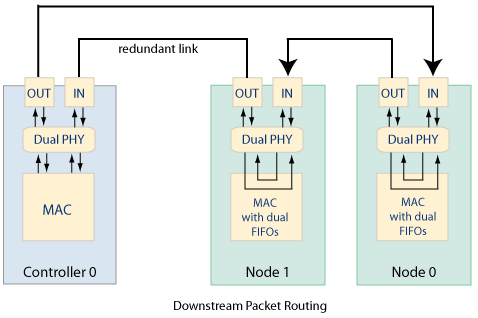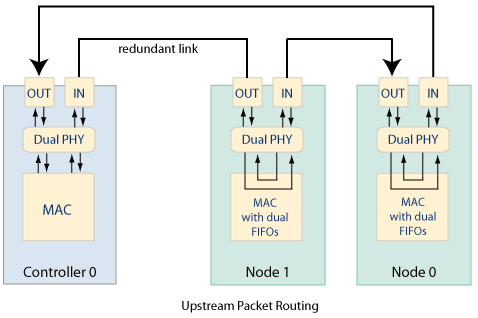Packet Routing in Normal Operation
Downstream
| Upstream
In normal operation, packets are routed downstream from
the controller to nodes, and upstream from nodes to controller.
Downstream Packet Routing
Downstream Packets proceed as indicated from controller
to all nodes. Each node forwards (repeats) each downstream packet as it
is received. All packets eventually reach all nodes.

The redundant link is essentially ignored in this situation.
However, it is critical for fault recovery. To make fault recovery possible,
the controller is actually sending identical packet streams on both the
IN and OUT ports, however Node 1 is aware that its OUT port is redundant,
therefore that stream is ignored.
Upstream Packet Routing
Upstream packets proceed as indicated from each node
to the controller. Each node forwards (repeats) each packet as it is received
from node to node. All packets eventually reach the controller (but all
nodes do not see all upstream packets).

The redundant link plays no part in the flow of upstream
packets. However, it is critical for fault recovery. To make fault recovery
possible, the controller will accept packets arriving at either the OUT
or IN ports. SynqNet timeslot allocation ensures that packets will not
collide by arriving on both ports at the same time.
|
